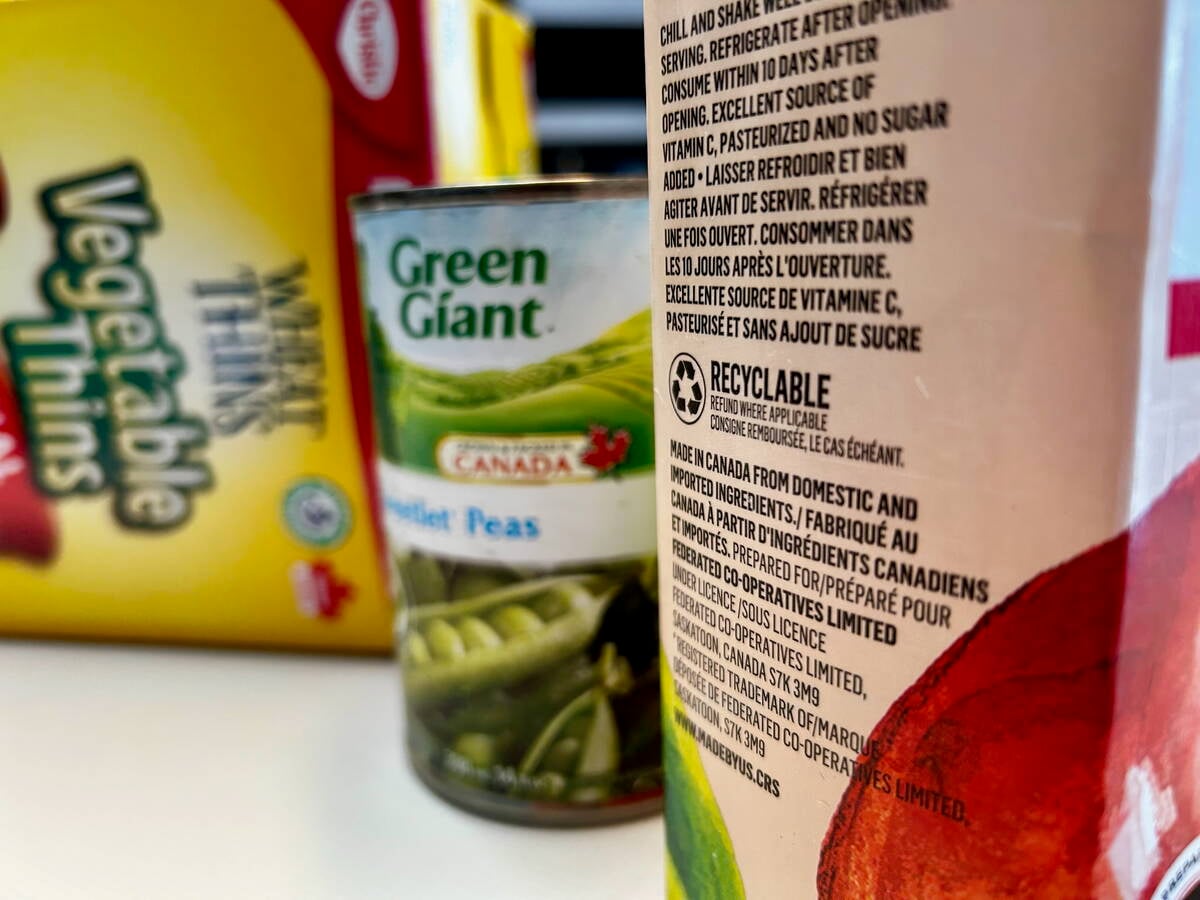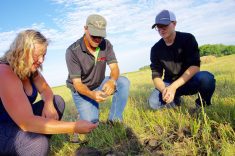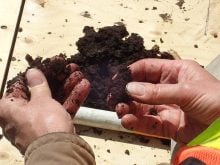If you want to make your soils healthier, the best place to start is usually with cover crops. Not only can they boost your soil’s biological activity, they can also improve your bottom line.
According to Laura Van Eerd, a professor of sustainable soil management at the University of Guelph, long-term cover crops can reduce nitrogen reliance and improve annual crop yields. She shared these conclusions from her research during the Ted Poyser lecture in soil health as part of the Sustainability in Canadian Agriculture Conference on March 5 at the University of Manitoba.
Van Eerd has spent her career investigating impacts of better management practices on soil health with recent research projects focusing on nitrogen use efficiency, cover crops and soil health. All have been performed on long-term experiment sites that utilize consistent cover crops, crop rotation and different tillage practices.
Read Also

Unclear food labels hinder Canada’s ‘buy local’ surge
“Maple-washing” on Canadian food packaging makes label claims hard to keep straight and hurts both farmers and consumers trying to buy Canadian, economist says.
The sites were established in 2007 and 2008, and continue to be utilized for research to better understand the effects of long-term soil health practices.
“I think of a resilient system as one that is less dependent on inputs,” she said. “(It) can produce crop productivity without a lot of inputs … what are the mangements that you can do on your farm, and when you link them all together, hopefully you’re less reliant on inputs,” she added, noting that one question to ask is “does it increase yield?”
Van Eerd and the sites are located in Ridgetown in Southern Ontario, where they can harvest vegetables early, and plant cover crops for a longer season. It is a contributing factor to their success with their practices. In the 16 metre by six metre plots, they grow vegetables, grains and oilseeds as part of the rotations.
Everything is operated with the long-term practices, also known as the six C’s of soil health, in mind: compost and amendments, compaction reduction, cover crops, complexity (considering both crops and animals), continuous living plants and conservation tillage.
“I would add that it’s a continuum, but you can join into this matrix at any point,” she said. “Maybe you’re seeking more from your soil, and so you’re like, ‘I would like more of this observed outcome of nutrient supply for my soil’. So, moving backwards to say, ‘okay, here are the actions that I’d like to take to get this outcome’.”

In recent years, Van Eerd and her students have run different projects to identify the clear benefits.
One project investigated the microbial community of the plots, and found that cover crops can increase tomato yields over time because of increased soil microbes. Another analyzed the impact of cover crops on tomato disease levels in collaboration with plant pathologists, with 2019 having high disease pressure of anthracnose.
They found that the crops with no cover crop had plants shut down quicker, meaning they had a lack of canopy and an increase in disease. Tomatoes grown on cover cropped soil had lower disease levels than non-cover cropped, particularly in the high pressure year.
“We see quite a bit of decline with long-term cover cropping than without, and these are the scale of what we might expect if we have a fungicide trial,” said Van Eerd.
They also tested nitrogen on tomatoes during this period, to compare it to the impact of cover crops, but found the impact on disease was less than cover crops.
Positive impact of cover crops was also seen with corn yield, which presented a “quite strong relationship” of improved soil organic matter and corn yield.
The researc looked at whether the effects were due to the presence of a cover crop, or whether long-term presence in the rotation was the key to benefits. Researchers sacrificed a section of the control plot which had never been cover cropped, and tested the theory with a corn crop and cover crop. They discovered a first time cover crop did improve the crop. The control without cover crop barely reached a metre in height. The first time cover crop was taller, but not by much. The long term cover crop plot, which had seen cover crops 11 times in 15 years, had the most significant growth.
Alongside this experiment, a student looked into the nitrogen dynamics of the crop and in the soil, and found that the no cover crop plants were deficient in nitrogen. Nitrogen for the cover cropped plots came from the organic matter and structural materials of the previous cover crop.
“Take home, we have healthy soils,” Van Eerd said. “They have many pathways by which the crop can uptake nitrogen.”
Van Eerd’s other long term study was on crop diversity at sites at Elora, Ont. and Ridgetown, which brought winter wheat into a rotation of corn and soybeans.
“(It’s) really helpful in terms of yield, but also soil health,” she said. “And red clover to some extent, alfalfa, definitely. But winter wheat alone is a huge contribution.”
It was found that by including winter wheat, there’s greater crop resiliency and yield in corn, even in the years that are too dry or too wet. In soybeans, winter wheat’s effect is that there is less reliance on nitrogen fertilizer.
















